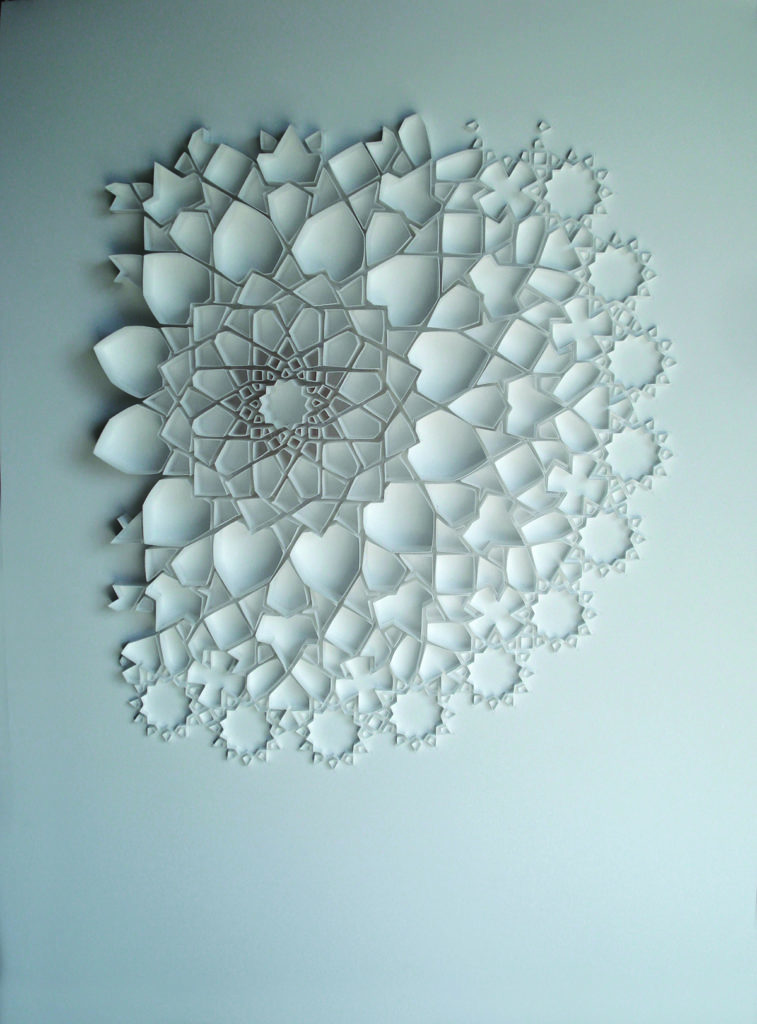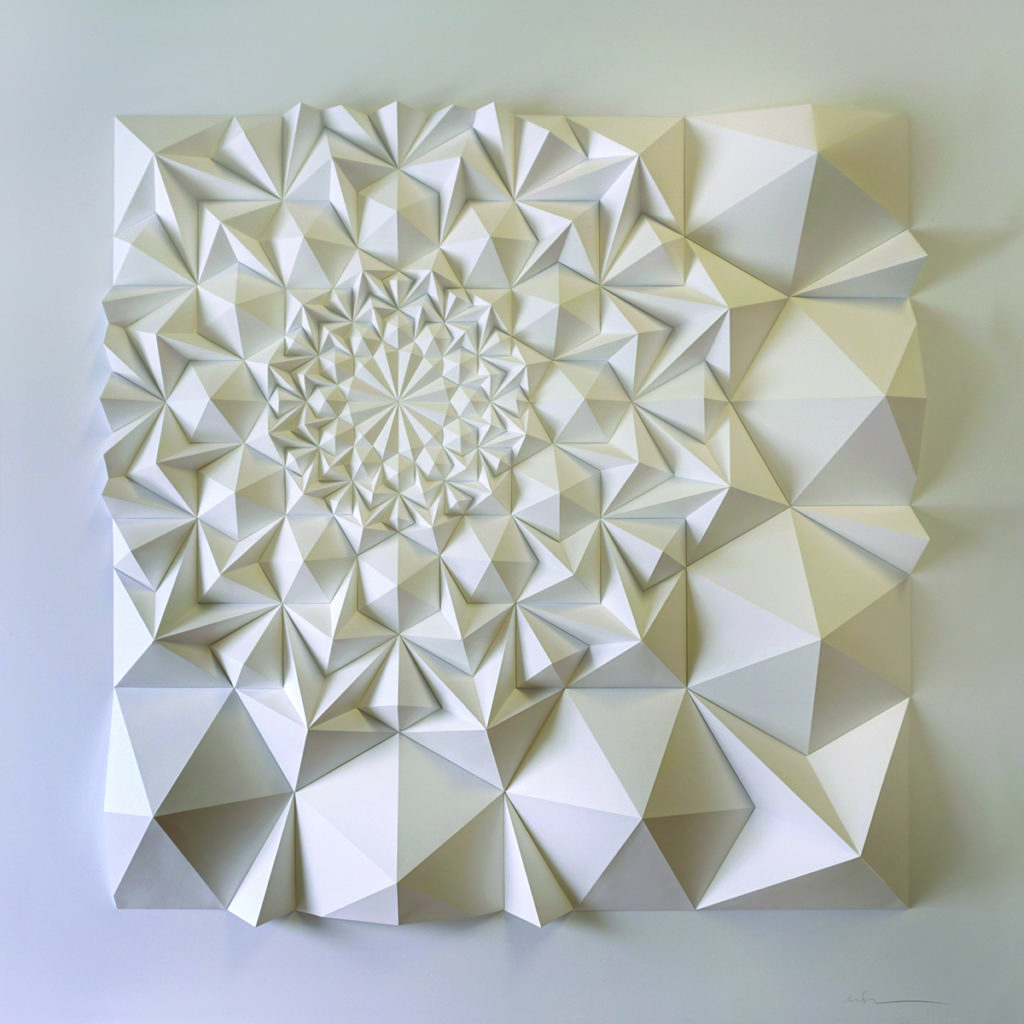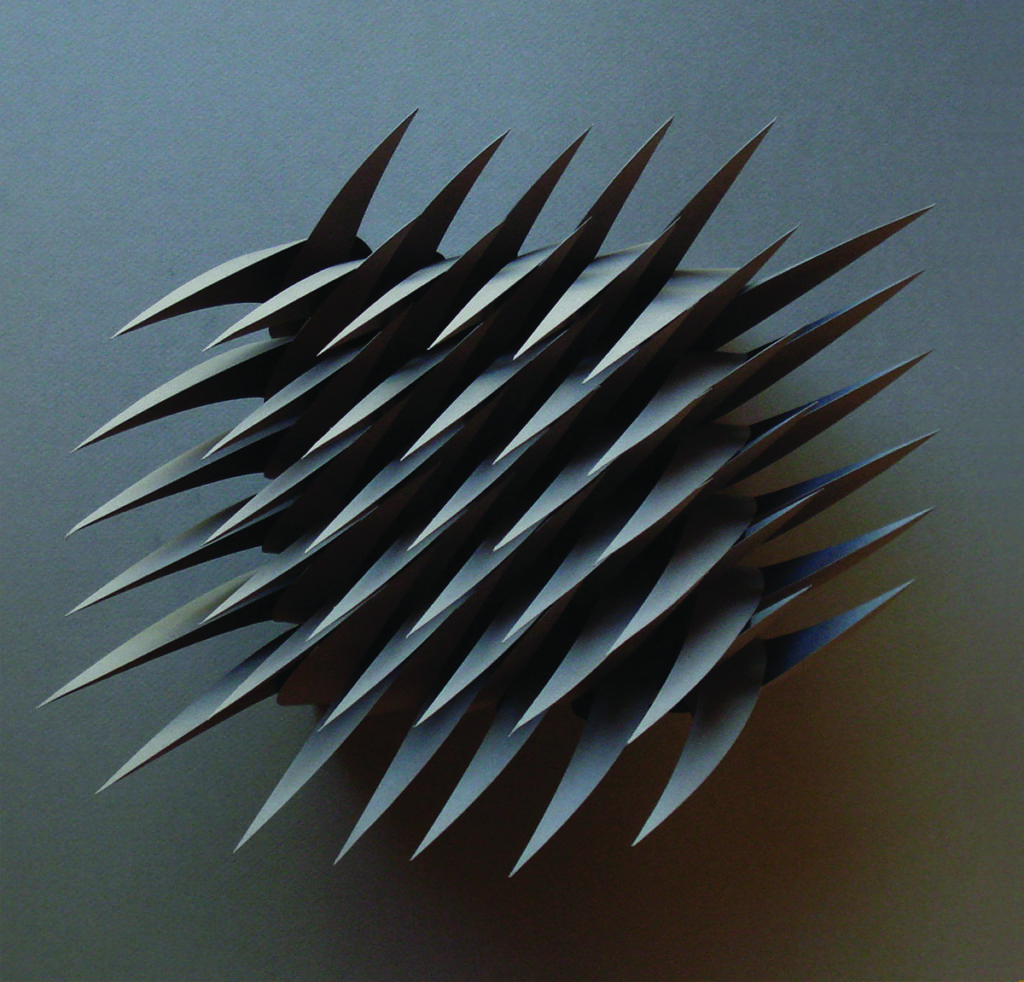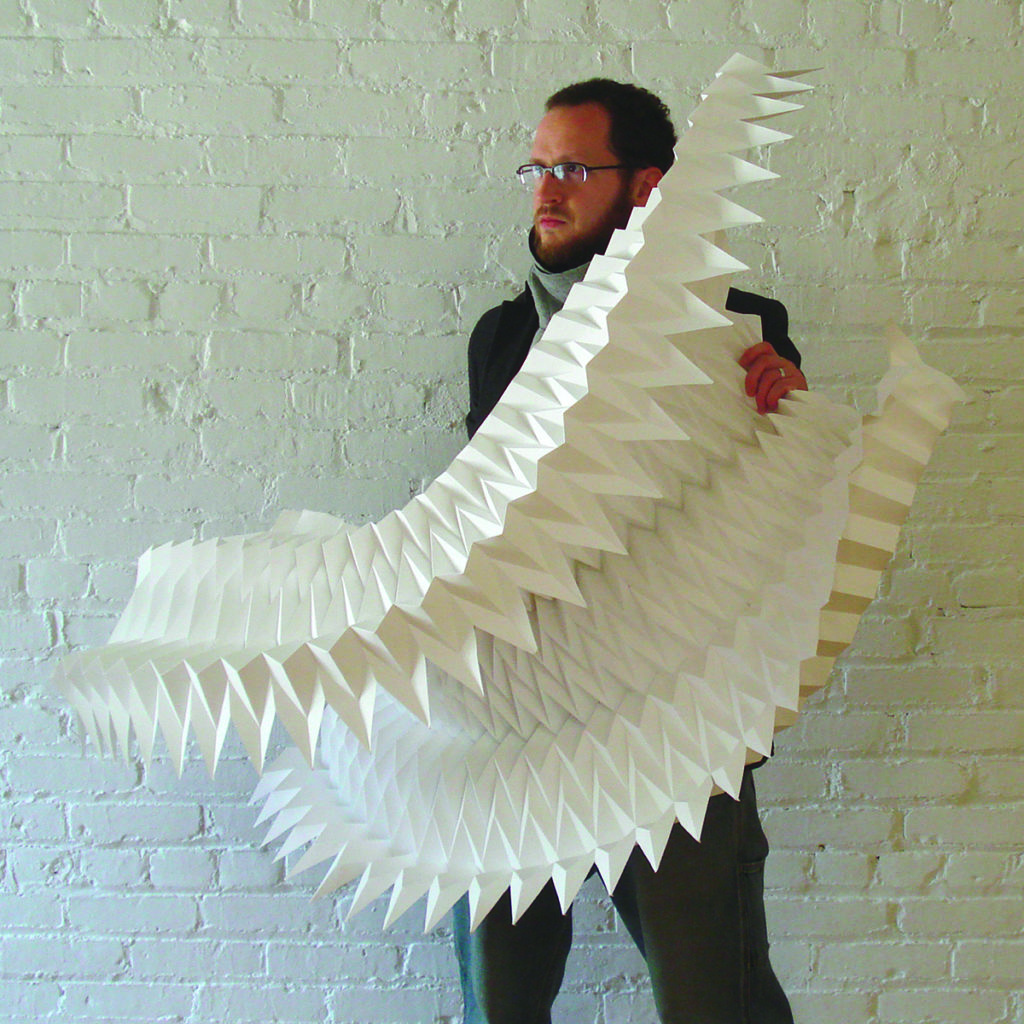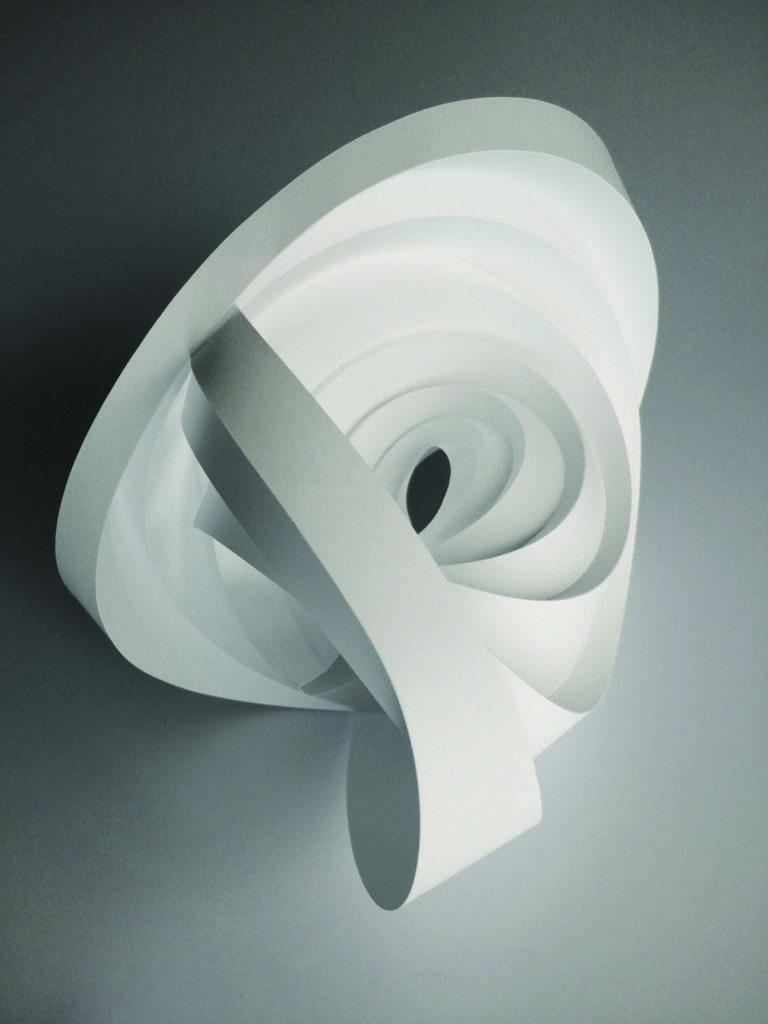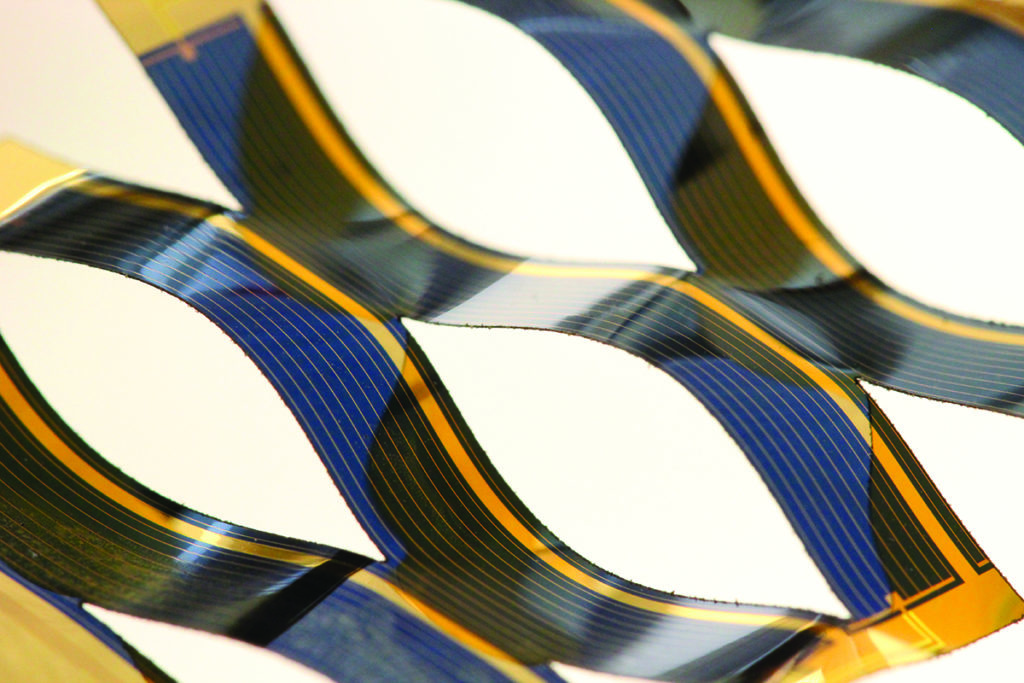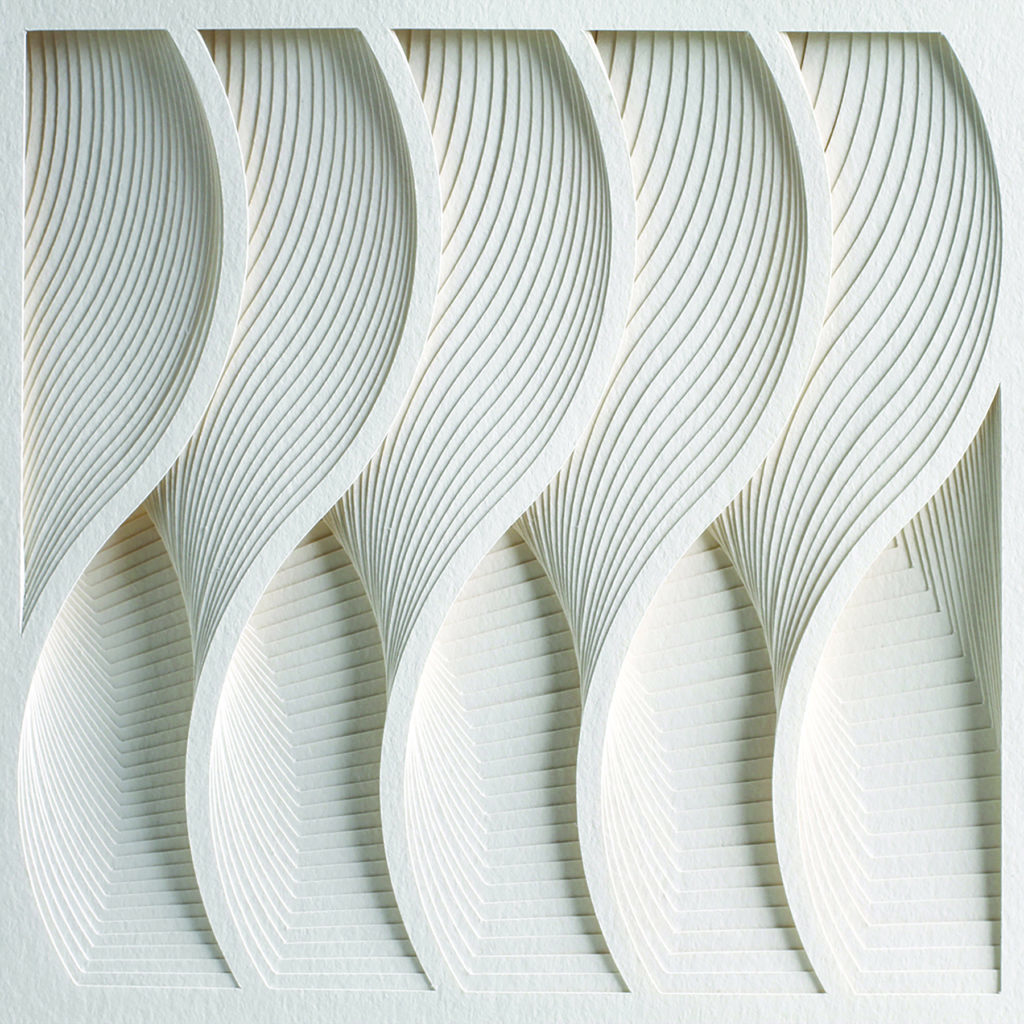Chirality
Matthew Shlian is an artist and designer working in paper. He uses the traditions of origami, kirigami, and paper engineering to transform flat materials into 3D sculptures and he applies his experience in collaborative research with scientists at the University of Michigan, Ann Arbor.
Origami is widely known as the art of paper folding, and kirigami extends it by integrating paper cutting, which can result in increasing a material’s flexibility and functionality. Shlian collaborates with scientists who are applying kirigami techniques to the development of innovative designs that would enable solar cells to move and track the sun.
Shlian’s work with scientists has also influenced his art. Chirality, the title of his exhibition at the National Academy of Sciences, refers to a property of asymmetry important in several branches of mathematics and science including genetics and biochemistry. It describes something that is not superimposable onto its mirror image; human hands are one of the most universally recognizable examples of this phenomenon. Shlian uses chiral patterns in many of his paper sculptures.
Shlian’s collaborations have disabused him of his assumption that scientists are primarily concerned with learning an established body of knowledge. “You find it’s not really like that with this cutting-edge work,” he says. “Scientists are just as curious as artists are; they’re just as excitable as we are about new things.”
Chirality was on exhibit from August 15, 2016 through January 16, 2017, at the National Academy of Sciences, 2101 Constitution Avenue, NW, Washington, DC.
Visit Matt Shlian’s website here: www.mattshlian.com
—Alana Quinn
Play Slideshow
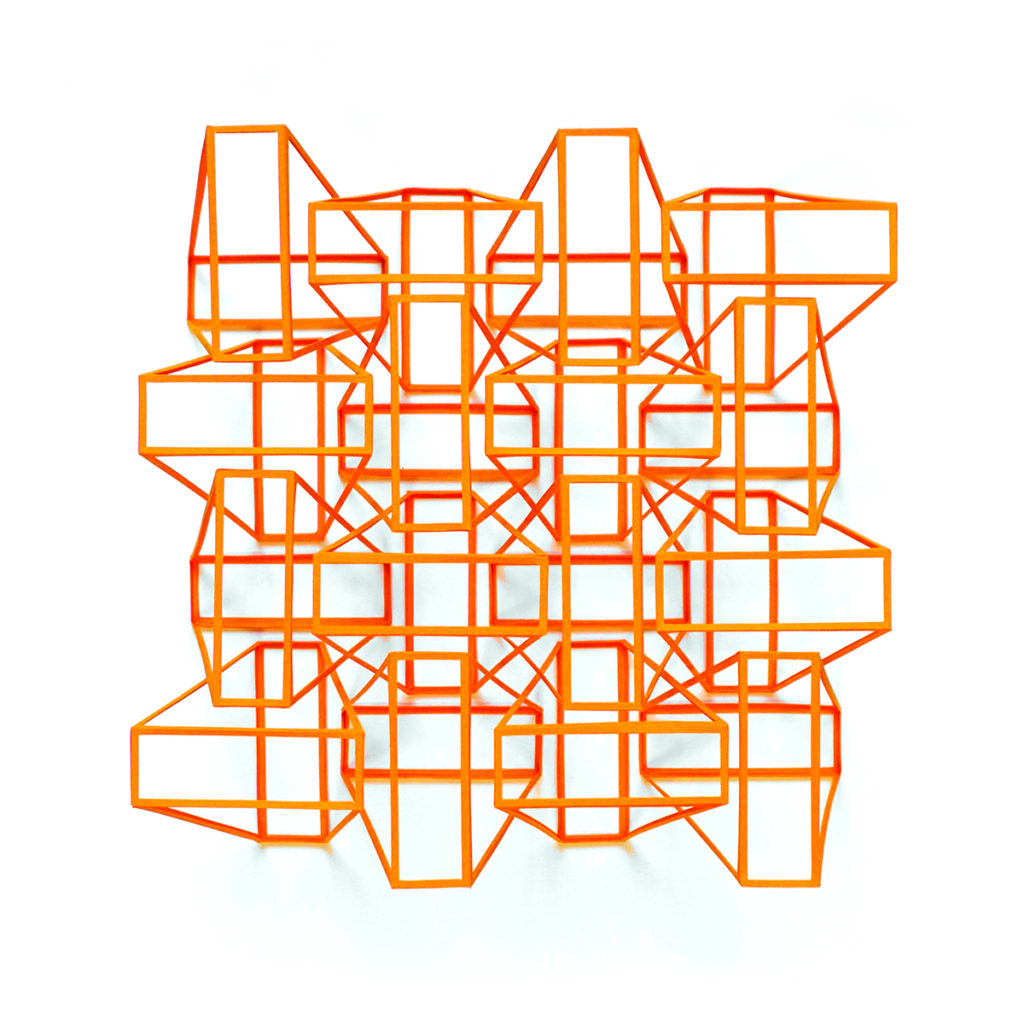
Telemetry
Matthew Shlian, 2015
Paper, 20 x 20 x 7 inches

Ara51
Matthew Shlian, 2010
Paper, 20 x 26 inches

Ara114
Matthew Shlian, 2014
Paper, 48 x 48 inches

Enneagon
Matthew Shlian, 2015
Paper, 48 x 48 inches

Cursive
Matthew Shlian, 2014
Paper, 20 x 20 inches

Matthew Shlian holding one of his sculptures

We Are Building This Ship as We Sail It
Matthew Shlian, 2010
Paper, 18 x 18 x 18 inches

Kirigami Inspired Elastic Solar Cells Model
Matthew Shlian, 2015
Image of dynamic kirigami structure capable of solar tracking, consisting of monolithically integrated, single crystalline yet flexible, gallium arsenide solar cells on polyimide sheets.
Matthew Shlian, in collaboration with Max Shtein, material scientist and engineer at the University of Michigan, Ann Arbor, began exploring the question, “Can we make solar cells more efficient by using paper folding and cutting techniques?” The limitation of
stationary solar panels is that they are only at maximum efficiency
for a limited amount of time during the day. Normal solar tracking
mechanisms are prohibitively bulky, heavy, and expensive for use on rooftops. Working together with Stephen Forrest (an electrical engineer, also at the University of Michigan) and graduate students
Aaron Lamoureux and Kyusang Lee, they developed solar cells made from thin-film crystalline gallium arsenide bonded to thin foils. The foils were then laser-cut into patterns inspired by kirigami, which allowed them to adjust the angle of the solar cells simply by stretching the kirigami sheet. As a result, exposure to the sun is maximized and electricity production is boosted significantly.

Process Series
Matthew Shlian, 2010/2013
Paper, 9 x 12 inches


